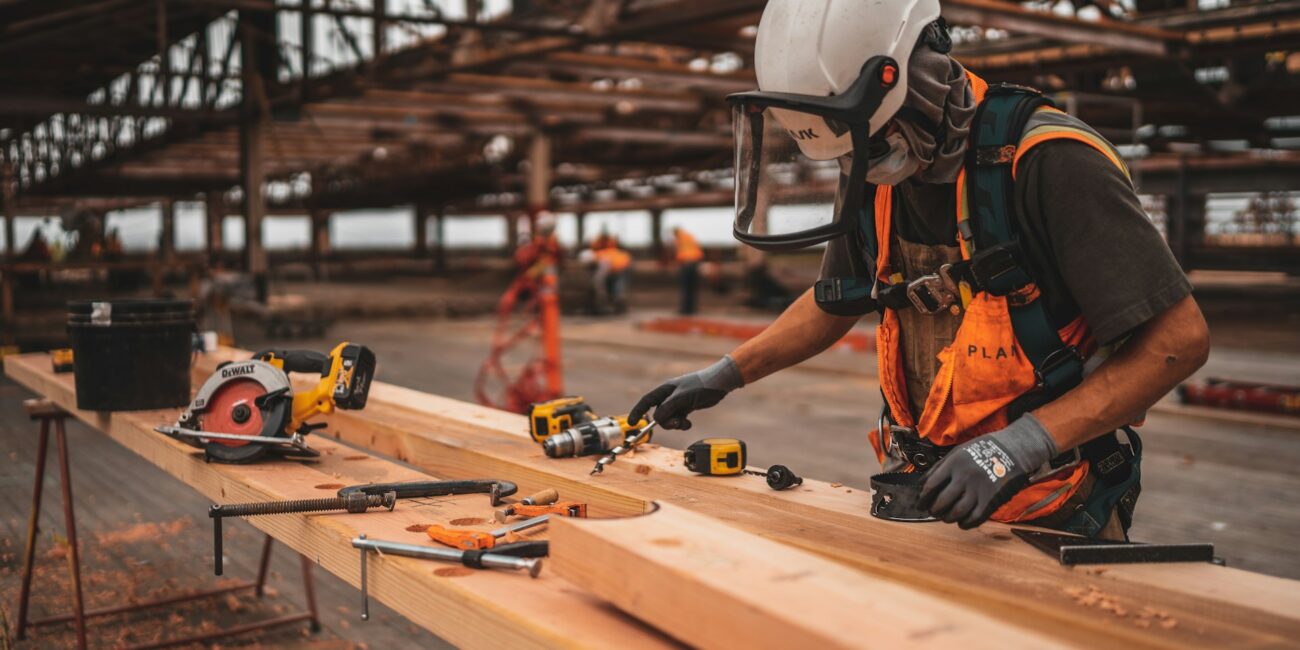In the high-risk environment of the construction sector, safety is paramount. With numerous hazards, from heavy machinery to elevated workspaces, the potential for accidents is significant.
Implementing robust construction safety protocols is crucial not only for protecting workers but also for ensuring the smooth and efficient operation of construction projects.
This blog post will explore the importance of safety protocols in the construction industry, providing insights and practical tips to help companies enhance their workplace safety.
From understanding industry standards to implementing effective training programs, we’ll cover everything you need to know to create a safer construction site.
Understanding Construction Industry Standards
Understanding construction industry standards is crucial for maintaining workplace safety and compliance. These guidelines, set by bodies like OSHA, help prevent accidents and injuries on construction sites. Key aspects include:
- Personal Protective Equipment (PPE): Proper use reduces the risk of injuries from falls, electrical hazards, and exposure to harmful substances.
- Safe Operation of Machinery: Ensures machinery is operated safely to prevent accidents.
- Emergency Procedures: Clearly defined protocols for handling emergencies mitigate risks during unexpected events.
- Regular Site Inspections and Audits: Frequent safety inspections help identify and rectify potential hazards before they lead to accidents.
By adhering to safety protocols, companies can significantly reduce risks, protect workers, and create a safer, more efficient work environment.
The Role of Personal Protective Equipment (PPE)
Personal protective equipment (PPE) is a critical component of construction safety protocols, ensuring that workers are shielded from potential hazards on-site.
PPE encompasses a range of protective gear, including helmets, gloves, safety glasses, and high-visibility clothing, each designed to offer specific protection:
- Helmets guard against head injuries from falling objects or accidental bumps.
- Safety glasses shield eyes from debris and hazardous substances.
- Gloves protect hands from cuts, abrasions, and exposure to harmful chemicals.
- High-visibility clothing makes workers more noticeable, reducing the risk of accidents involving vehicles or machinery.
Providing access to and proper use of PPE is paramount for maintaining a safe construction site. Equally important is training workers on the correct usage and maintenance of their PPE to ensure its effectiveness.
Regular inspections and timely replacements are necessary to sustain the protective capabilities of PPE, thereby reinforcing the overall safety and well-being of the workforce.
Implementing Effective Training Programs
Implementing effective training programs is crucial for maintaining workplace safety in the construction industry. Comprehensive training ensures workers understand the risks associated with their tasks and know how to perform them safely. Key elements of an effective training program include:
- Orientation for New Hires: Covers essential safety protocols, site-specific hazards, emergency procedures, and proper equipment use.
- Regular Refresher Courses: Keeps workers updated on the latest safety practices with hands-on training, simulations, and real-life scenarios.
- Continuous Improvement Culture: Encourages workers to share safety concerns and suggestions, fostering a safer work environment through open communication.
Prioritizing these aspects not only ensures compliance with industry standards but also significantly enhances workplace safety.
Conducting Regular Safety Audits
Regular safety audits are essential for maintaining high safety standards on construction sites. By systematically examining safety practices, equipment, and procedures, these audits help identify potential hazards and areas for improvement. Here’s why they are crucial:
- Ensures Compliance: Verifies that your site adheres to construction industry standards, promoting a culture of workplace safety.
- Consistent Scheduling: Whether weekly, monthly, or at key project milestones, a set schedule ensures safety remains a priority.
- Comprehensive Coverage: Encompasses all aspects of site safety, from equipment checks to worker behavior.
- Thorough Inspections: Inspectors verify the proper use and condition of PPE, check machinery for defects, and assess site organization.
- Prompt Corrective Actions: Issues identified are documented, and corrective actions are implemented promptly to mitigate risks.
- Worker Involvement: Engaging workers in the process provides valuable insights and fosters a collaborative approach to safety.
Regular safety audits not only ensure compliance with industry standards but also reinforce a proactive safety culture, leading to safer and more efficient construction sites. For more detailed information on construction safety protocols and initiatives, visit this website.
Leveraging Technology for Safety
Leveraging technology is pivotal for enhancing workplace safety in the construction industry. Modern advancements offer innovative solutions to monitor, manage, and improve safety protocols effectively. Here are key technologies making a difference:
- Wearables and Sensors: Devices like smart helmets and vests monitor vital signs, detect fatigue, and alert supervisors to potential health risks. Sensors placed around construction sites can detect hazardous conditions, providing real-time alerts for immediate action.
- Building Information Modeling (BIM): This digital technology allows for detailed planning, visualization, and analysis of construction projects, helping identify safety issues during the design phase and enabling proactive measures before construction begins.
- Mobile Applications and Software: These tools streamline safety management by enabling efficient incident reporting, conducting safety inspections, and maintaining compliance documentation. Digitizing these processes improves accuracy, transparency, and accountability.
By integrating these technologies, construction companies can significantly enhance safety, creating safer environments and reducing the risk of accidents.
Fostering a Culture of Safety
Fostering a culture of safety is essential for the long-term success of any construction project. This approach goes beyond merely complying with construction industry standards; it ingrains safety as a core organizational value. Leadership is crucial in this transformation, requiring:
- Commitment from Leaders: Allocate resources for safety initiatives, provide ongoing training, and recognize safe behavior.
- Open Communication: Encourage reporting hazards, suggesting improvements, and discussing safety concerns without fear.
- Integration into Operations: Incorporate safety protocols in project planning, procurement, and scheduling.
By establishing a safety-first mindset, accidents are significantly reduced, ensuring a safer work environment and contributing to the overall success of the project.
Conclusion
In conclusion, prioritizing safety protocols in the construction sector is essential for protecting workers, complying with industry standards, and ensuring the success of projects.
By adhering to construction industry standards, providing appropriate PPE, implementing effective training programs, conducting regular safety audits, leveraging technology, and fostering a culture of safety, companies can create safer work environments and minimize the risk of accidents.
Investing in safety not only safeguards workers’ well-being but also enhances productivity, reduces costs, and improves overall project outcomes. Remember, safety is not a one-time effort but an ongoing commitment that requires continuous improvement and vigilance.
To learn more about construction safety protocols and how to implement them effectively, visit this website. Start prioritizing safety today and create a workplace where everyone can thrive.



